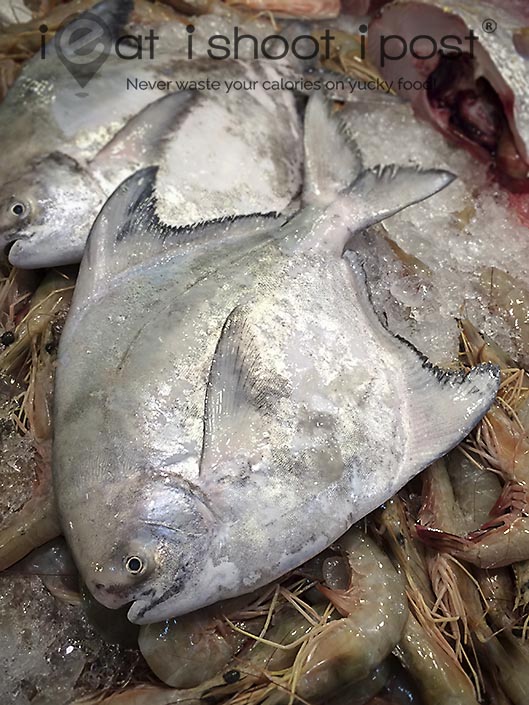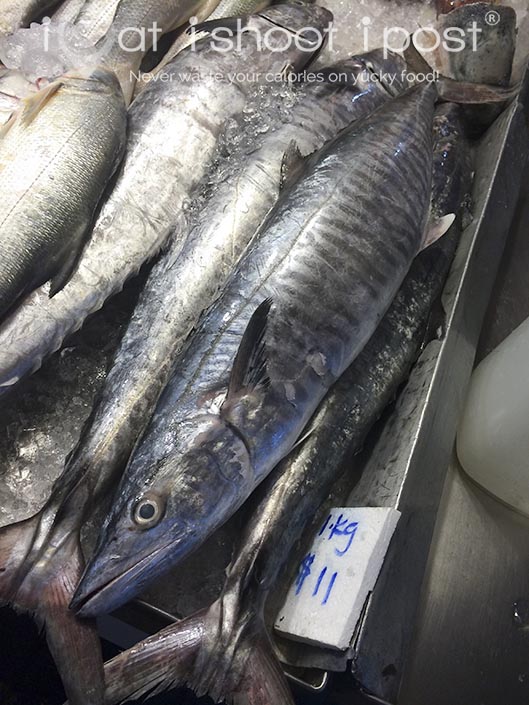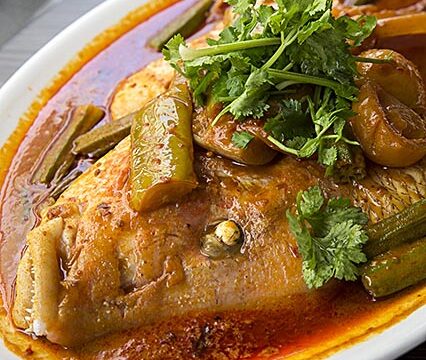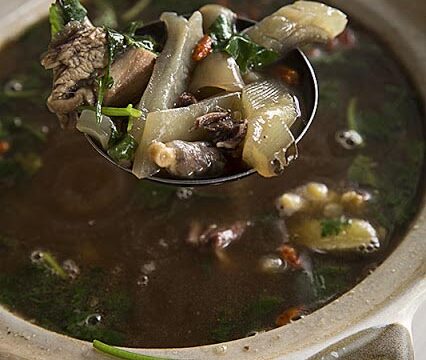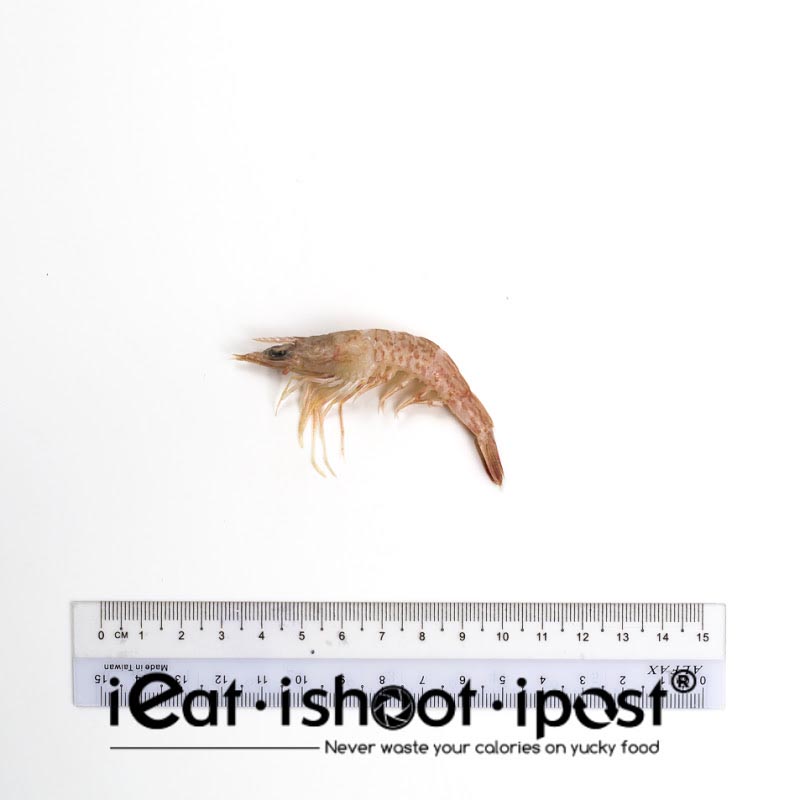 This final post on Singapore prawns deals with all the small shrimps which are frequently overlooked as they are not as impressive as their larger cousins. They are a pain to de-shell but these shrimps are treasures of tender flavour just waiting to burst in your mouth! They are small by virtue of their species and are not, as some people erroneously assume, the baby versions of the larger prawns. They are great for making stock, deep frying and as filling for dumplings. A lot of them end up being sun dried to become Hae Bee (dried shrimps) which eventually powers the umami engine of your bowl of laksa! Now, that is how tasty this little crustaceans are!
This final post on Singapore prawns deals with all the small shrimps which are frequently overlooked as they are not as impressive as their larger cousins. They are a pain to de-shell but these shrimps are treasures of tender flavour just waiting to burst in your mouth! They are small by virtue of their species and are not, as some people erroneously assume, the baby versions of the larger prawns. They are great for making stock, deep frying and as filling for dumplings. A lot of them end up being sun dried to become Hae Bee (dried shrimps) which eventually powers the umami engine of your bowl of laksa! Now, that is how tasty this little crustaceans are!

Metapenaeopsis palmensis
Southern Velvet Shrimp
Local: Tai Gor Hei (腐烂虾) lit: Rotting skin
Deep fried Sakura Ebi are a favourite in Japanese restaurants but they often cost a bomb for a small serving. The Southern Velvet shrimp is a good alternative and it is much cheaper. These shrimps have thin variegated shells which look as if it had some sort of skin disease, hence the locals call them Tai Gor Hei (腐烂虾) — such an unceremonious name for this tasty little creature!
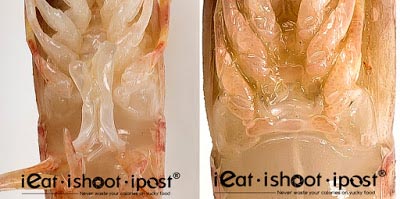
Sexual Organs of the Southern Velvet Shrimps
They are not readily available but I have bought some from the Lor Ah Soo market before for $5 per kg. I picked out the nicer ones and simply dust them with a bit of flour, deep fried them and served them with a sprinkling of salt. Because their shells are thin, the outside turns into a crunchy, crustacean flavoured crust making them into crunchy little umami bombs! The uglier ones I used to make into a prawn stock for prawn mee soup. Rather then shelling them, I simply boil them whole blend them in the pot with a hand blender. The meat of the shrimp is where the sweetness lie and you end up with a really sweet prawn soup base which you can’t get by just using prawn shells! It is unfortunate that they are not available all the time. So, if you are planning a big prawn mee party at church or your community club, you can buy a few kgs of it from either Jurong or Senoko fishery port.
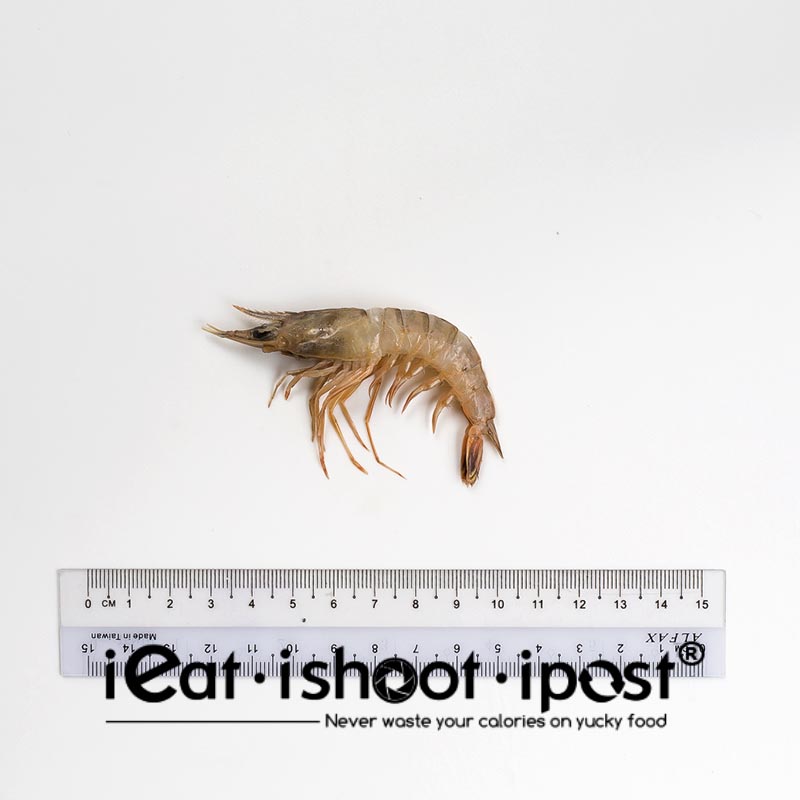
Trachypenaeus curvirostris
Southern rough shrimp
Local: Jian Xia (剑虾 – Sword Shrimp)
These next few shrimps appear sporadically and are usually sold under the label of small shrimps or Jian Xia (剑虾 – Sword shrimp) in reference to the long, sabre like rostrum.

Sex organs of Trachypenaeus curvirostris
No one really looks for these type of shrimps specifically. Most of the time, you buy them when they are available and use them as shrimps for frying vegetables or for making stock. So the following few photos are included here for your reference in case you come across them at the markets. There are probably a dozen more of these small shrimps which are commonly fished around the region.

Parapenaeopsis hungerfordi
Common name: Dog Shrimp
Local Name: Jian Xia (剑虾 – Sword Shrimp)

Sex organs of Parapenaeopsis hungerfordi
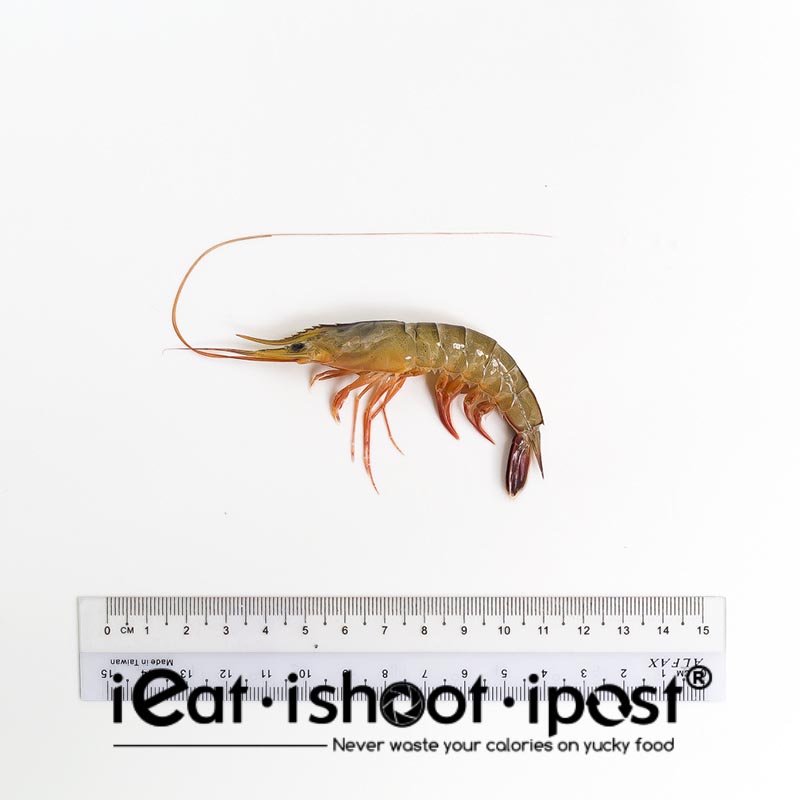
Parapeneopsis coromandelica
Common name: Coromandel Shrimp
Local name: Jian Xia (剑虾 – Sword Shrimp)
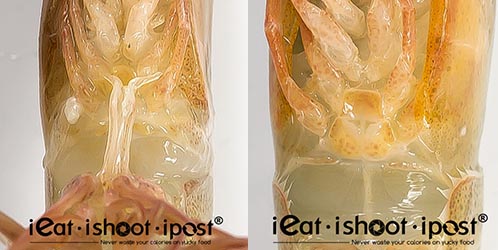
Sex organs of Parapeneopsis coromandelica
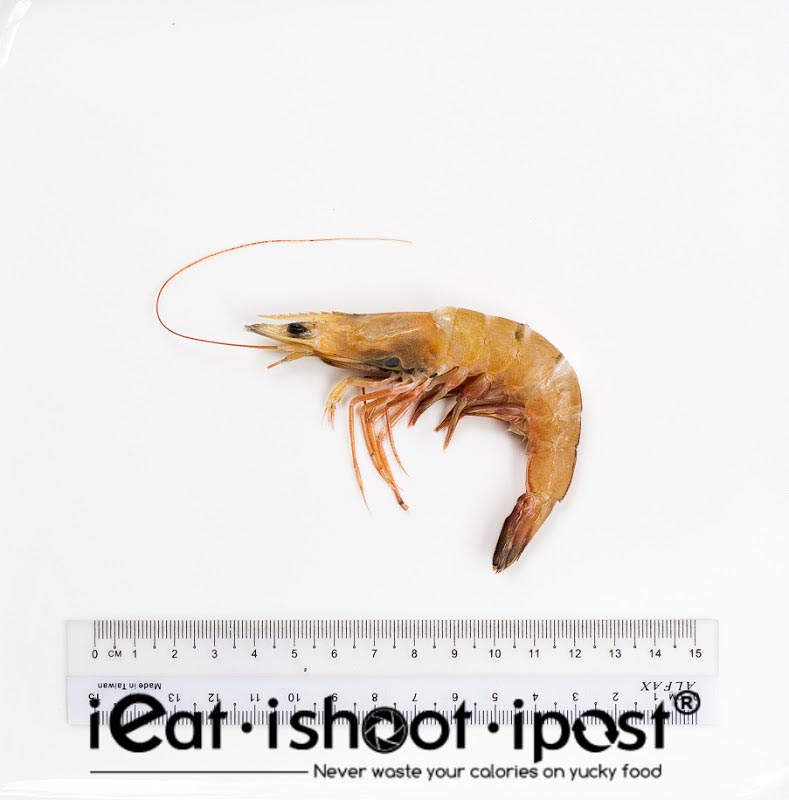
Metapenaeus conjunctus
Common Name: Wood Shrimp
Local name: Jian Xia (剑虾 – Sword Shrimp)
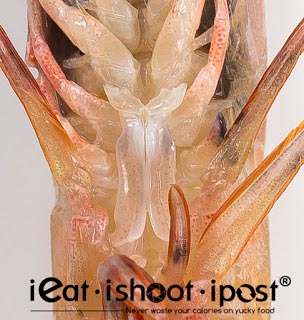
Male sex organ of Metapenaeus conjunctus

Metapenaeus papuensis
Common Name: Papua Shrimp
Local Name: Sua Lor Kia (baby Sua Lor) 沙卢子
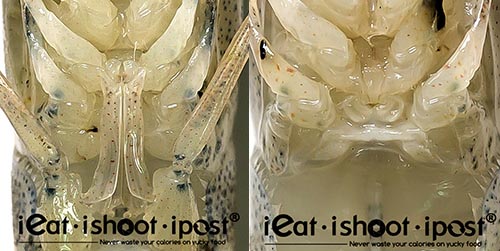
The Papua Shrimp is the only small shrimp where I can find a reasonably constant supply. They are sold for years by the lady at stall 7, Lor Ah Soo market. For a long time, I just assumed they were baby Sua Lors because the lady tells me that was what they were. However, I decided to buy some home one day to properly identify them and realized that they were another species.
These Papua shrimps are excellent. They are sweet and tender and makes great filling for wonton as well as for frying with veggies. The lady at stall 7 has a special arrangement with the wholesalers at Senoko so that they will always set aside a supply for her. She also has regular customers who come to the market specially seeking these prawns. They go for around $10 per kg.
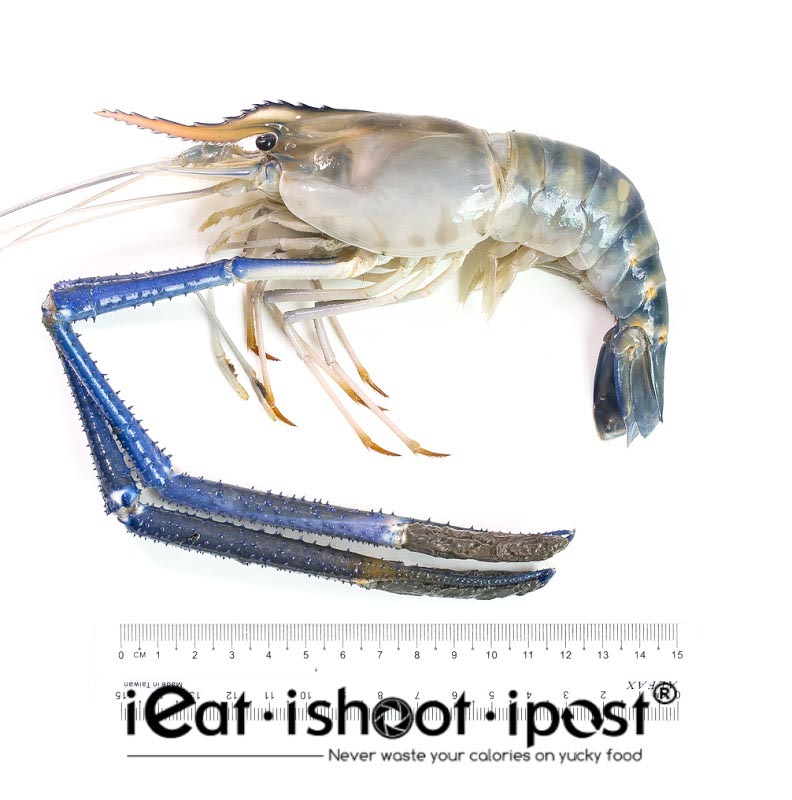
Male Giant River Prawn
Macrobrachium rosenbergii
Common name: Giant River Prawn
Local name: Malay Udang Gelah, Jia Jui Hei (淡水虾 – Freshwater prawns)
These are very impressive giant prawns which can be found in the rivers of the region. They are very popular in Thailand and are often served grilled or in Tom Yum soup. In Malaysia, they are very popular in Sang Har Meen. During the season, rich KLites would head to the mouth of the Endau river buy the giants directly from the fishermen. The big ones can go for as much as RM$50 per prawn!
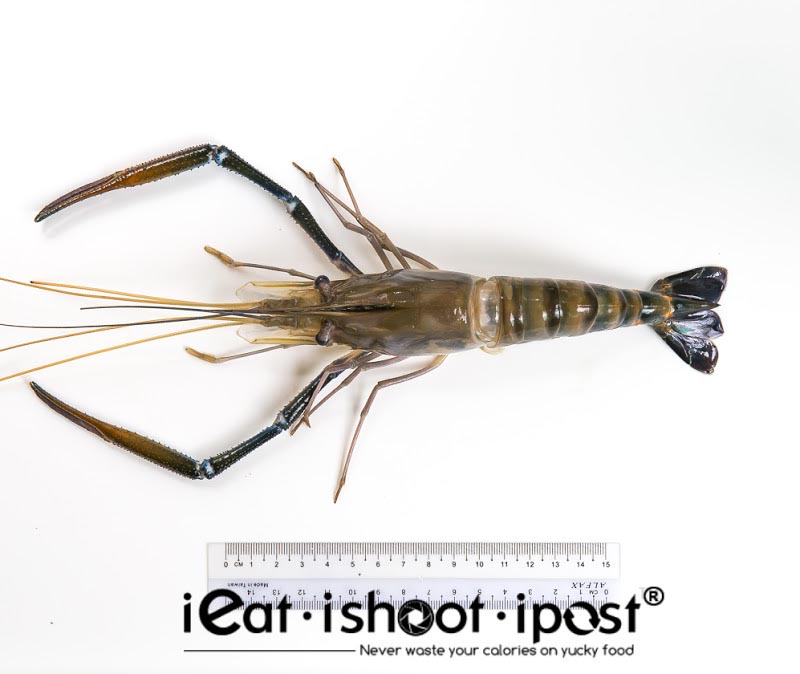
Female Giant River Prawn
These prawns are really big headed and so you get relatively little meat for the size of the prawn. The real treasure lies within the head where the generous amounts of tomally make for a tasty, rich stock to pour over freshly fried noodles or hor fun. I have bought these before from Smith St market and Tekka market. I split them open and fried them with garlic, ginger and oyster sauce to make a superb hor fun gravy!
The way to differentiate between the male and female of the species is to look at the claw. The ones with the longer claws with the furry covering are the males. The claws contain hardly any meat and add to the total weight. So unless you are out to impress visually, it makes better sense to buy the females which have smaller claws and sometimes can be full of roe!
Conclusion
That is the last of the four part series on local prawns in available in Singapore. You can find most of these prawns at the local wet markets and they are a world of difference from the ones that you find at the supermarkets. I am hoping that we can eventually have specialty shops selling local seafood like the fine butcheries that are sprouting up across the island. The local wet markets are good, but the problem is that they only open in the mornings. I would be great to be able to buy fresh local seafood from a specialty shop in the evenings as well. Perhaps the NEA can consider this when they build the next set of wet markets?
Other blog posts in the series:
Part 1: The Striped Prawns
Part 2: The Coloured Prawns
Part 3: The Sand Prawns
Here’s a little trick I picked up from playing with so many prawns over the last few months! Prawns store very well in the freezer, but you want to make sure that they can stack properly and freeze quickly.
Acknowledgements
I wish to thank the following experts for helping me with the identification of the prawns:
1. Prof Tin Yam Chan, Institute of Marine Biology of the National Taiwan Ocean University
2. Ken Loon, The Naked Finn





